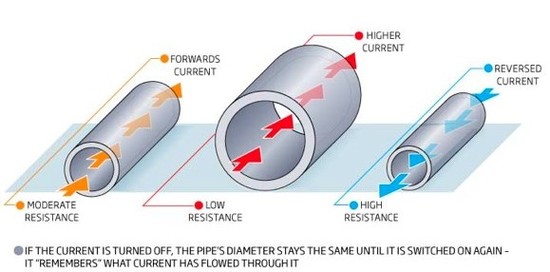Memristor is a technology many have been following and it finally looks like it is getting ready for the market. It could possibly replace both NAND and DRAM as it can achieve the same speeds as RAM, with the capacity of NAND. The development has gone much faster than predicted, and the technology is expected to be available in 2013.
HP that is leading the development behind the memristor, teamed up with memory maker Hynix, to make it real. Earlier this year we reported that the memristor has shown extremely high durability, handling over 1 billion writes. This can be compared to current MLC NAND circuits at 25nm that are specified to 5,000 writes before going corrupt.
What makes memristor special is that the technology will result in the same capacity as NAND circuits, and hopes to reach the same speeds as DRAM. Together with the high reliability it sounds like a winner. The memristor change resistance depending on which direction the current passes throug. It can maintain this resistance when the unit is turned off. The commercial name with be ReRAM.

The development has gone much faster than expected. HP reports that it is producing hundreds of wafers at Hynix’ fabs. It is actually going so well, that it expects have the first competitor to NAND out in 18 months, thus in 2013. ReRAM circuits will come in two shapes. A slightly faster version for internal storage ”Flash” on mobile devices like smartphones, tablest and USB memory sticks, while the second targets SSDs.
It hopes that in 2014 ReRAM will be ready to compete with DRAM, and even replace SRAM. But it claims that it can take until 2015 when a DRAM/SRAM contender could be ready for sure. HP says that the technology is well suited to fit as a layer on top of a processor circuit, opening up doors for integrating RAM or many-fold larger cache in future processors.
HP sounds very confident over the new technology, and beside Hynix, Samsung has an even larger group working on the memristor technology than HP and Hynix has together. HP says that the ambitions are not to get ito components, but to license the technology to interested parties. We see only one problem, there has to be chipsets and processors that support the technology, but if the advantages are as amazing as HPS says it should not take long for the technology to be adopted.
Source: ElectronicsWeekly





















Leave a Reply